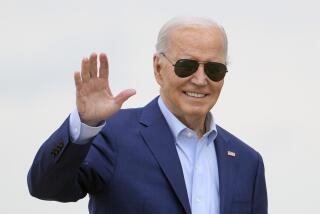Profit, Escape From Vietnam, Laos Sought : MIA Search Spawns Trade in Bogus Remains
The neatly dressed Vietnamese woman reached into her purse and pulled out a human jawbone.
“This is all I dared smuggle out, but I saw whole skeletons and the wreckage of the plane,” she said. She said she had sneaked the jawbone, some teeth and notes taken from military identification tags out of Vietnam during a recent visit to Ho Chi Minh City (formerly Saigon).
“My relatives can help the U.S. government get these remains if the government will help them get out of Vietnam,” she said. “They should also get a reward.”
The woman later turned over the remains to a U.S. military officer working for the Joint Casualty Resolution Center, responsible for coordinating the resolution of missing-in-action cases.
2,411 U.S. MIAs
The identification-tag names she supplied were not among those of the 2,411 Americans listed MIAs of the Vietnam War, but the bone was sent to the Army identification laboratory in Hawaii.
Tests on it are incomplete, but the odds are that the jawbone will join the long list of supposed MIA remains found to be bogus.
The Vietnam War ended more than 12 years ago, but the stream of remains, sighting reports and identification tags has increased.
Since 1979, the U.S. government has received more than 2,000 reports from Southeast Asia concerning purported remains or identification of American servicemen, Ross Petzing, a U.S. embassy official, said.
6% of Cases Unresolved
“Only 6% of these 2,000 reports remain unresolved,” he said. “The others were discounted for various reasons.”
Hopes of profit or help in escaping from Vietnam or Laos keep the remains coming.
“There is a brisk trade in phony remains and dog tags or rubbings of dog tags,” a U.S. official said.
He said that most of the false reports and evidence were passed on unwittingly by refugees and relatives who believed them to be genuine.
Disruption of Sites
“It is obtained through intermediaries who are perpetuating false rumors of rewards by the United States or special resettlement consideration in the United States for their own profit,” he said. “Often they have to pay several ounces of gold--a real fortune for them--for this worthless stuff.”
Even more damaging than the trade in false remains is the disruption of genuine crash sites and graves, said Lt. Col. Johnnie Webb, commander of the U.S. Army’s Central Identification Laboratory in Hawaii.
“Bones get removed, divided up among several remains,” he said. “Evidence is lost, and that may make it impossible for us to make identifications when we or the local authorities get to the site.”
Free-lance ‘MIA Hunters’
He blamed part of the commercialization of remains on free-lance “MIA hunters” who offer rewards for information.
Barry Flynn, an associate of Col. James (Bo) Gritz, who led unsuccessful forays into Laos in search of prisoners of war, agreed that some groups do not check information carefully.
“They don’t care whether the information or evidence is credible,” Flynn said. “They just want to use it to raise more money so they can live it up.”
He said the private reward offers have stimulated the bogus bone trade.
Most Reports Fraudulent
“Hardly a week goes by without a note or a bone coming in with the message that more remains or live Americans can be smuggled out,” Flynn said. “But they all expect money up front.”
Most such reports prove to be frauds, he said.
Even Rep. Thomas Ridge (R-Pa.) said he was approached during a January visit to Ho Chi Minh City by a person offering information and evidence of MIAs.
“It was under circumstances that were troubling to me, and I took some preliminary information and turned it over to Joint Casualty Center,” he said. Ridge declined to give further details.
Traffickers Punished
Ridge’s companion on the trip, Rep. Robert Mrazek (D-N.Y.) said that Vietnamese Foreign Minister Nguyen Co Thach told the delegation the Hanoi government punishes Vietnamese found to be trafficking in alleged remains.
Mrazek said that Thach also criticized groups and individuals who have announced a reward of more than $1 million for the return of a live American POW.
Some U.S. officials, however, say that Vietnam is ultimately to blame because it has refused to give a full accounting of the missing.
A U.S. official said there was “compelling evidence” the Vietnam government knows what happened to more than 220 MIAs. The official said reports that Hanoi has stockpiled more than 400 remains were “credible.”
Lab Work Hindered
Webb said that bogus remains hinder work of the Army’s Central Identification Laboratory.
“It takes up the time of the scientist who has to examine the items and the researchers who have to try to correlate the data and then write the report,” Webb said.
More to Read
Start your day right
Sign up for Essential California for news, features and recommendations from the L.A. Times and beyond in your inbox six days a week.
You may occasionally receive promotional content from the Los Angeles Times.






